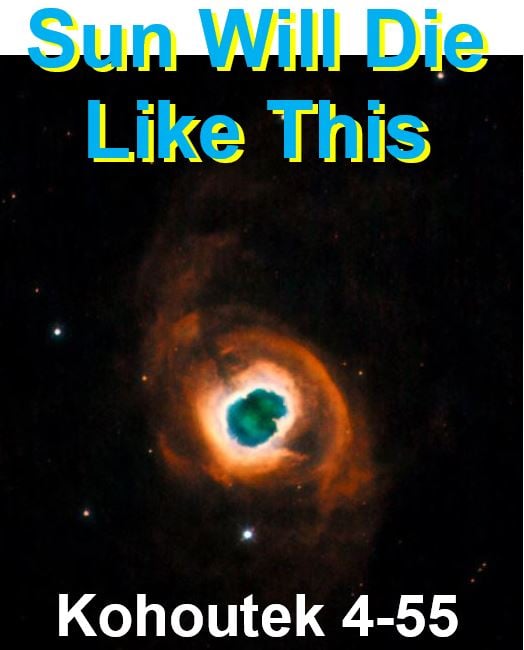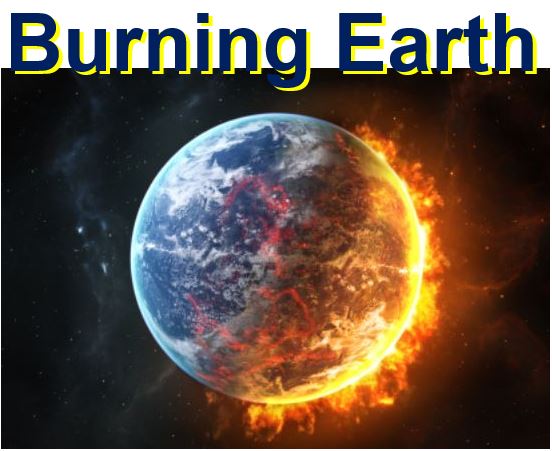The world will end when the Sun dies, just like this, the Hubble Space Telescope informed via a colourful image of a dying star, approximately the same mass as our Sun. The end of life on Earth and the rest of the Solar System, if there is any, would be sealed by an incredibly beautiful swirl of gas surrounding a moribund star.
When a star gets very old, the nuclear reactions that keep it shining brightly start to falter. This haphazard energy generation causes the star to pulsate irregularly, as it casts its outer layers into space.
As these outer gases are shed by the star, its ultra-hot core is revealed. It gives off massive quantities of ultraviolet light – this radiation makes the gas shells glow, creating the fragile beauty of the nebula.
 This image of the dying star – Kohoutek 4-55 – offers a glimpse of our Sun’s future. (Image: NASA, ESA and the Hubble Heritage Team STScI/AURA. Credit: R. Sahai and J. Trauger from the Jet Propulsion Laboratory)
This image of the dying star – Kohoutek 4-55 – offers a glimpse of our Sun’s future. (Image: NASA, ESA and the Hubble Heritage Team STScI/AURA. Credit: R. Sahai and J. Trauger from the Jet Propulsion Laboratory)
Kohoutek 4-55 similar to our Sun
The Hubble Space Telescope image is of the dying star Kohoutek 4-55. The star is named after Czech astronomer Luboš Kohoutec, who discovered it. It is 4,600 light years from here, in the direction of the constellation Cygnus.
Hubble’s image was taken by its Wide Field Planetary Camera 2 (WFPC2), which was installed in 1993 and worked until 2009.
WFPC2 took several of Hubble’s iconic images during its 16-year working life. It helped make the space telescope a household name globally.
This particular shot is in fact a composite of three photographs, each one taken at a specific wavelength to isolate the light coming from particular gas atoms. The different wavelengths have been colour-coded to aid recognition.
 Long before the Sun dies, our planet will be burnt to a crisp. (Image: integratedmortgageplanners.com)
Long before the Sun dies, our planet will be burnt to a crisp. (Image: integratedmortgageplanners.com)
Blue represents oxygen, green shows hydrogen and red signifies nitrogen gas. The whole sequence was captured on 4th May, 2009, over a period of two hours.
A glimpse of our Sun’s future
The intricate gas swirls offer us a glimpse of what is in store for our Sun when it reaches the end of its life.
The Sun, in about 5 billion years’ time, will be dying. It will behave in the same way as the image shows, shedding its outer layers to reveal its burning core, which then slowly cools into a white dwarf.
A white dwarf is a small very dense star, about the size of a planet. It is formed when a low-mass star has exhausted all its central nuclear fuel and lost its outer layers.
Our planet will be long gone by that time, completely burnt as the Sun dies. However, the beauty of our Sun’s passing will shine across the Universe.
Video – Death of the Sun
